The Panarello is one of those parts of the espresso machine that goes almost unnoticed in everyday life. We use it, we enjoy our milk foam, and we don’t stop to think about it much longer. However, not many users know what Panarello is in a coffee machine. We know what it’s for and little else.
It turns out that the Panarello is a relatively recent “invention” or technology in the home coffee industry and is not the same as a traditional vaporizer or steamer wand.
There are coffee makers with Panarello and coffee makers with a vaporizer. They are not the same. Are you surprised? Well, don’t worry because on this page we’re going to explain everything.

What exactly is the Pannarello?
A Panarello is an improved system or an evolution of a classic household coffee maker’s milk frother.
The trick is that the Panarello, in addition to water vapour, injects a tiny amount of air into the milk. It is almost invisible, in the form of micro-bubbles, but sufficient for the user to obtain a creamy and dense milk foam, magically, without moving a finger or taking into account any of the traditional patterns or canons of dairy emulsion.
With a standard vaporizer, on the other hand, we must have some basic barista knowledge to obtain the correct milk foam to serve in our preparations.
To achieve this effect, the Panarello of coffee machines uses a small hole that allows the entrance of air that is later going to be injected into the milk. If we look at the thick outlet tube from close up, we can see it. Then we will show a close-up photo with this example.
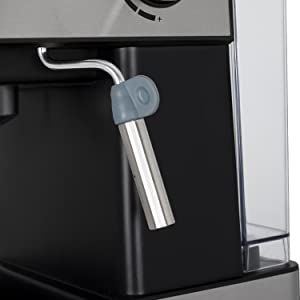
Today, many of the manual espresso machines and all the super-automatic machines mount a Panarello (or auto Cappuccinator, or each with the name given to it by the manufacturer) instead of a traditional lancet, which is becoming increasingly rare on the market.
Why do Panarellos exist?
Pannarellos exist primarily for practical reasons and not just to “help” the user achieve better foam effortlessly.
The real reason for the existence of Panarello is that home coffee machines have very small boilers, proportionate to the average size of the tank, and a small amount of service at the end of the day.
Consequently, if we make espresso, we have to wait a while before the boiler is filled again and the water is heated to over 100°C to generate steam and expel it. Besides, the amount of water is not much, and the strength of the steam is insufficient to emulsify the milk properly.
With a Panarello, this problem is hugely alleviated since the injection of air allows the foam to be created with less steam than a traditional steamer lance requires.
It is why we will rarely see a Panarello in a professional coffee machine in the catering trade: it is not necessary. The machine will have enough strength and capacity to expel the steam with the desired power.
Differences between the Panarello and the steamer lance
The traditional lancet or vaporizer in coffee machines only injects steam into the milk.
A Panarello, in addition to the steam, injects small micro-bubbles of air into the milk. It aerates it more. It makes the foam denser but also more artificial, with less effort and less skill on the part of the user.
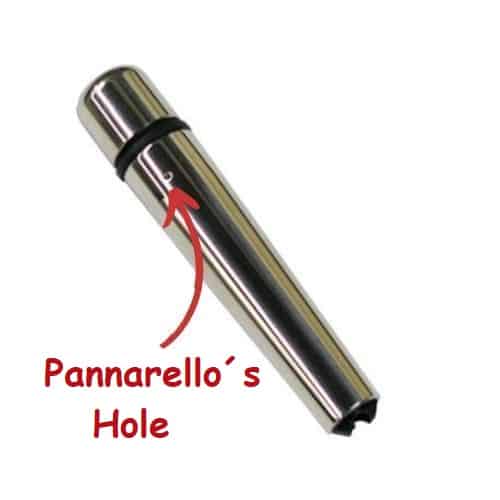
The differences, if you look at the pictures above, are also evident to the naked eye:
The steamer lance is nothing more than a skinny stainless steel tube.
The Panarello, on the other hand, is thicker and consists of several smaller components, such as a plastic sleeve that covers the tube or a cap. In the following section, we can learn more about them:
Understanding the parts of a Panarello
This section should be taken simply as a reference since there is no standard as to the typology and shape of Panarello, and each coffee maker or brand makes its own devices as it suits them.
A Panarello, if disassembled, consists of the following essential parts or components that cover the original spray lancet washers that facilitate integration on the steel tube. A cap, a handle or inner wand, and a final emulsion sleeve is the one that comes in contact with the milk and the one that houses the air collection and injection system.
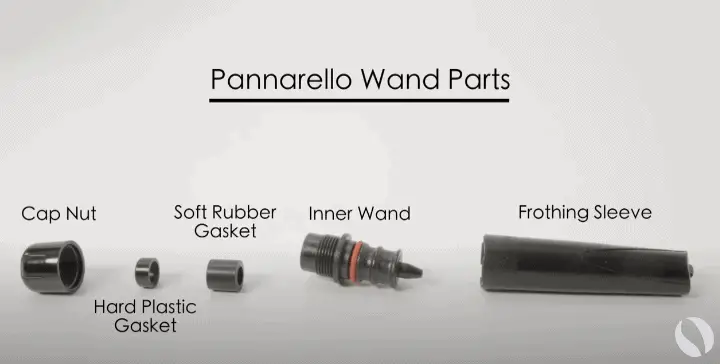
Sometimes you can even “transform” or switch from having a spray lancet to having a system similar to Panarello. To do this, all you have to do is attach a nozzle and an emulsion sleeve to the original vaporizer tube, which will help you achieve that Panarello effect with the infusion of air. In this case, the sleeve (which is the most significant piece in the photo) is the one with the characteristic hole we mentioned before.
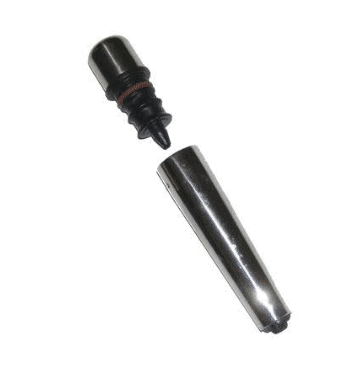
How to use a Panarello: All you need to know
The use of the Panarello is marked by the manufacturer because each uses its technology and functions. But, in essence, the use is the same as that of a lance vaporizer. We activate the function in the coffee machine, put the Panarello in the milk, and apply the steam for a few seconds.
Thanks to the action of the air, there is hardly any need to move the milk or to calibrate the remaining distance between the steam exit nozzle and the bottom of the container where it is emulsifying. It is an emulsion system (without sounding pejorative), totally for dummies.
To learn more about how the Panarello is used in the coffee maker, we recommend that you read the following articles.
- How to froth milk correctly
- How to make a perfect cappuccino
- Latte Art for beginners
- Stainless steel milk jugs
What do you use a Panarello for?
The Panarello in a coffee machine has mainly two functions:
- To emulsify milk.
- To serve hot water.
In some models, hot water is served through a separate pipe, but in most home coffee machines, it is the Panarello that performs this double output.
Of course, the coffee maker uses two different temperatures depending on the service we choose. To emulsify the milk, the Panarello expels water vapour. The boiler has to heat the water to over 100°C.
To serve hot water, naturally, the temperature required is lower.
In short, with a Panarello installed in your coffee machine, you can do the same thing as with a conventional milk frother. The difference is that you already have the Panarello installed on your machine. It takes advantage of the thermostat and the boiler that the coffee maker already has to heat the water to a sufficient temperature so that it can become steam expelled by the lance.
And also, as we have already repeated, the “advantage” or the small help of the air injection that allows the foam to always come out dense, at the cost of less purity. Because the air bubbles, let’s not forget, end up falling apart over time.
Some brands incorporate some extra functions in their Panarellos, such as some switch or exchanger functions to emulsify milk or to heat milk (without creating foam). It is the case, for example, with Delonghi’s Panarello’s:
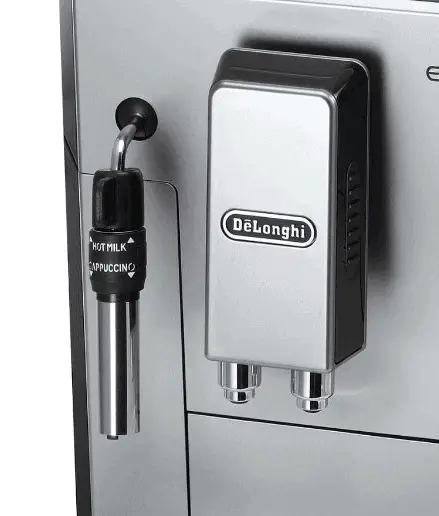
Maintenance and cleaning of the Panarello in your coffee machine
The primary care of a Panarello is almost the same as we already know for the spray nozzles.
- Clean the milk residue with a damp cloth. After emulsifying milk, we must always remove the remains in the mouth of the tube.
- Let out a short and robust jet of steam after use. This short burst of steam will help to expel any remaining milk inside the nozzle that could not be removed with a cloth in the previous step.
- Periodically, let a cycle of hot water come out of the steamer wand. It will help to ensure that no sediment or milk residue is left in the internal pipes of the system.
- Disassemble and clean the non-metallic components of the Panarello by hand. The material difference between the vaporizer and the Panarello is the additional components it has, as we have seen before. The sleeve or nozzle, apart from the lids and interior parts, can be made of plastic or rubber, depending on where they are located. They should be dismantled (if possible) and cleaned thoroughly, using a damp cloth or rag, to ensure that no organic residue from the milk remains in them either.
And if you already want to go professional, take a look at the following video to clean the Panarello of your coffee machine:
